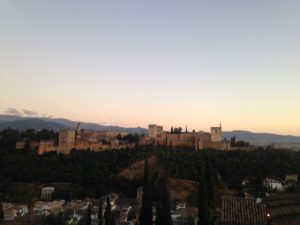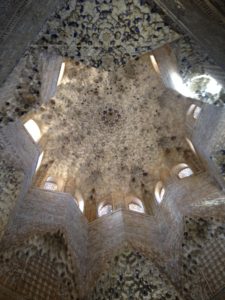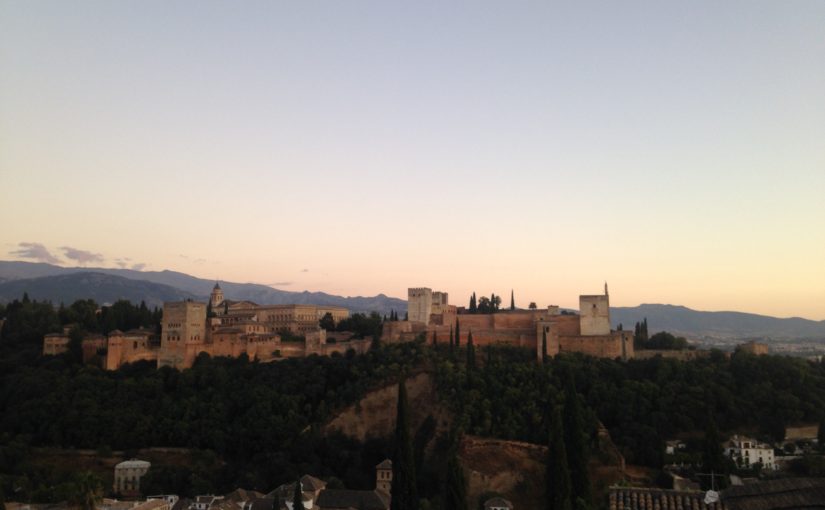After being abroad for two months, I’ve had many incredible opportunities to explore different cities that are extremely different than Fargo. After living in Granada for a while, making a Venn diagram of the similarities and differences of Granada versus Fargo would be a piece of cake.

Of the many differences, one of the most noticeable is the Moorish architecture, of which the Alhambra exhibits are an exceptional example.
Situated on top of one of the foothills of the Sierra Nevada Mountains, the Alhambra was once a fortress, and is now one of Granada’s most popular places to visit. It is also a UNESCO World Heritage site. Entrance tickets sell out regularly, so I was happy my study abroad program had tickets and a tour already lined up for us.
With its Moorish architecture, the Alhambra is a sight to marvel at. From the exterior you can see many windows throughout the complex and various different levels. The entryways have horseshoe arches, which are common in Moorish architecture. At night, lights shine on La Alhambra, giving it a warm glow and making its beauty visible from so many different angles.
While it’s beautiful from the outside, inside is where the magic happens. There are details everywhere. No space is too small for decorations of some sort, and no part is unimportant enough to have some form of artwork. Ceilings are decorated with intricate carvings, painted tiles line lower halves of walls and detailed patterns are everywhere. Courtyards house beautiful reflection pools and gardens, and every window contains a beautiful view.
From inside the Alhambra one can see the entire city of Granada, with exceptional views of the Albaicín neighborhood. From the top of the watchtower visitors are greeted with 360-degree views of Granada and the mountains.

The Alhambra was so magical that famous writer, Washington Irving, spent time living in it. There he was filled with inspiration for his work, “Tales of the Alhambra.”
From afar, the Alhambra can be seen sitting royally atop its hill with a beautiful backdrop of the Sierra Nevada Mountains. The land below the Alhambra is lush with trees and the Río Darro.

Years ago, there were no trees surrounding the Alhambra. Trees would have made excellent cover for potential enemies intending to attack the fortress. Therefore, to make it easier to spot enemy attacks, the area around the fortress was kept clear of trees.
To fully experience the beauty of the Alhambra, one must see it at sunset. After exploring different parts of Granada, it is safe to say the best time and place to see the Alhambra from afar is during sunset from Mirador San Nicolás in Albaicín or from San Miguel in the neighborhood of Sacromonte.
Locals and tourists alike gather at these two spots to watch the light of the sun shine on the Alhambra and the Sierra Nevada Mountains. To the west, the sun sets behind some of Spain’s other mountain ranges in the distance, but always casts a warm glow on the Alhambra.
Every time I pass the Alhambra or see it, I can’t help but to take a photo of it. With its beauty and details, patterns and history, it is no wonder why it is a UNESCO World Heritage site.
